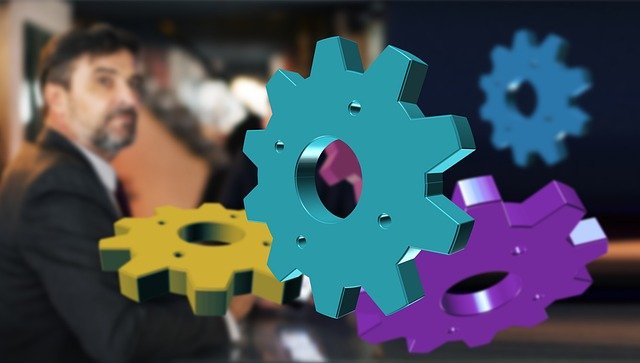Redefining Business Productivity with Biomimetic Process Design
In the ever-evolving landscape of industrial operations, a groundbreaking approach is reshaping how businesses optimize their processes. Biomimetic process design, inspired by nature's intricate systems, is emerging as a powerful tool for enhancing efficiency, sustainability, and innovation across various sectors. This novel methodology draws upon billions of years of evolutionary refinement, offering companies a fresh perspective on tackling complex operational challenges.

The concept isn’t entirely new – Leonardo da Vinci’s flying machine designs were inspired by bird flight. However, modern advancements in technology and a deeper understanding of biological systems have propelled biomimicry into the forefront of industrial innovation. Today, companies across various sectors are harnessing these principles to revolutionize their processes, products, and services.
Key Principles of Biomimetic Process Design
At its core, biomimetic process design is guided by several key principles derived from natural systems:
-
Resource Efficiency: Natural processes are inherently optimized for resource use, often operating in closed-loop systems that minimize waste.
-
Adaptability: Biological systems demonstrate remarkable flexibility in responding to changing environmental conditions.
-
Resilience: Nature has developed robust mechanisms to withstand and recover from disturbances.
-
Multifunctionality: Many biological structures serve multiple purposes, maximizing efficiency and reducing complexity.
-
Information-rich Feedback: Natural systems rely on constant feedback for regulation and optimization.
By incorporating these principles into industrial processes, businesses can achieve significant improvements in efficiency, sustainability, and innovation.
Implementing Biomimetic Strategies in Business Operations
Translating biomimetic principles into practical business applications requires a multidisciplinary approach. Companies are increasingly forming cross-functional teams that bring together biologists, engineers, designers, and business strategists to identify and implement nature-inspired solutions.
One notable example is the redesign of cooling systems in data centers. Inspired by the efficient heat dissipation mechanisms in termite mounds, some companies have developed passive cooling systems that significantly reduce energy consumption. These systems mimic the natural airflow patterns found in termite structures, allowing for effective temperature regulation without relying heavily on mechanical cooling.
Another area where biomimetic design is making waves is in supply chain optimization. By studying the decentralized, adaptive behavior of ant colonies, businesses are developing more resilient and flexible supply networks. These systems can quickly respond to disruptions and efficiently allocate resources, much like how ant colonies adapt to changing environmental conditions.
Challenges and Considerations in Adoption
While the potential of biomimetic process design is immense, its implementation comes with challenges. One significant hurdle is the need for a shift in mindset from traditional linear thinking to a more holistic, systems-based approach. This requires not only technical expertise but also a cultural change within organizations.
Additionally, the complexity of natural systems can sometimes make it difficult to isolate and replicate specific principles. There’s also the risk of oversimplification or misapplication of biological concepts to industrial problems. Successful implementation requires a deep understanding of both the biological inspiration and the industrial context.
Moreover, the initial costs of research and development for biomimetic solutions can be substantial. Companies must be prepared to invest in long-term research and experimentation, which may not yield immediate returns but can lead to significant breakthroughs in the long run.
Future Prospects and Industry Impact
As biomimetic process design continues to evolve, its potential to drive innovation across industries is becoming increasingly evident. From aerospace engineering to material science, companies are finding novel ways to integrate nature-inspired solutions into their operations.
The impact extends beyond individual businesses to entire industries. For instance, the construction sector is exploring biomimetic principles to create more energy-efficient and sustainable buildings. By mimicking the thermoregulation strategies of termite mounds or the water collection mechanisms of desert beetles, architects and engineers are developing structures that can passively manage temperature and humidity.
In the manufacturing realm, biomimetic design is influencing not just processes but also product development. Companies are creating self-cleaning surfaces inspired by lotus leaves, adhesives based on gecko feet, and lightweight yet strong materials modeled after spider silk. These innovations are opening up new possibilities for product functionality and sustainability.
Biomimetic Business Insights
• Look to nature for circular economy models – ecosystems are inherently waste-free.
• Embrace diversity in your processes, mimicking the resilience of natural ecosystems.
• Implement decentralized decision-making structures inspired by swarm intelligence.
• Design for adaptability, allowing systems to evolve with changing conditions.
• Prioritize energy efficiency by studying nature’s low-energy solutions.
As we stand on the cusp of a new era in industrial innovation, biomimetic process design offers a compelling path forward. By turning to nature’s time-tested strategies, businesses can unlock new levels of efficiency, sustainability, and resilience. The key lies in viewing our industrial challenges through the lens of natural systems, fostering a deeper connection between human innovation and the wisdom of the natural world. As more companies embrace this approach, we can expect to see a transformation in how industries operate, leading to more harmonious and sustainable business practices that benefit both the bottom line and the planet.





